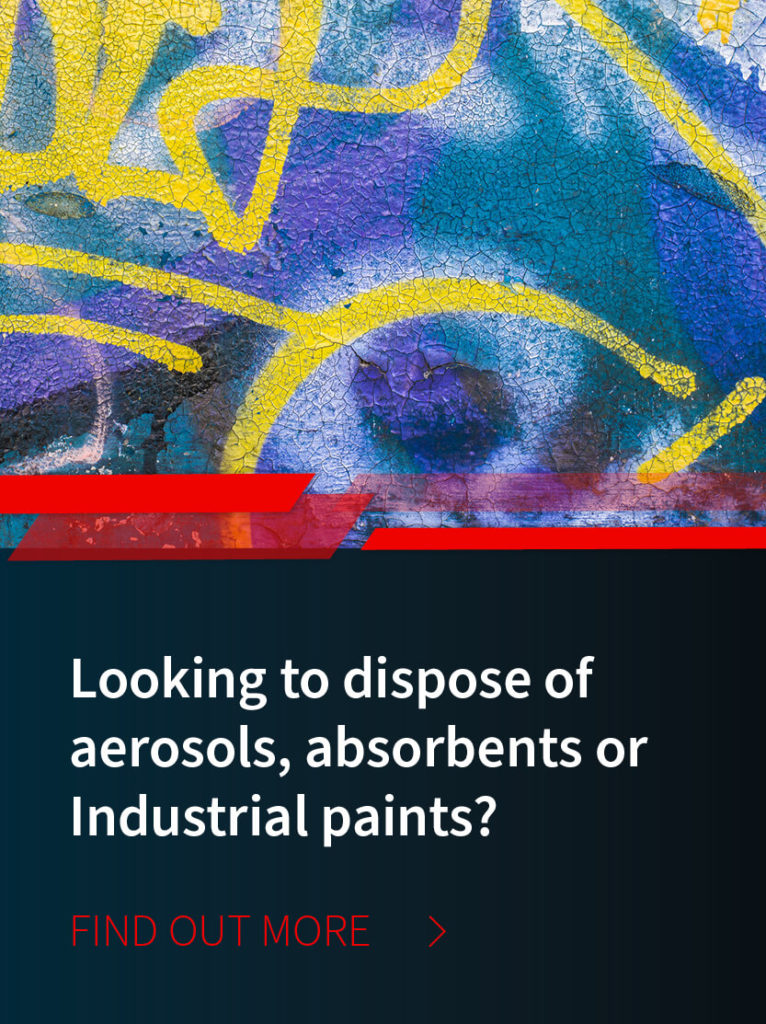
/ IN THIS BLOG
01 / Intro to mom & pop industrial wastes
The term “industrial waste” (aka “manufacturing waste”) usually evokes visions of gargantuan slag heaps, giant piles of scrap, and 55-gallon drums of foaming liquid hazmat—all of it strewn across some esthetically-challenged asphalt lot behind a big, ugly, smoke-belching manufactory.
But not so fast…
A significant part of the estimated 7.6 billion tons of industrial waste produced annually in the US is attributable to its 32.5 million small businesses (e.g., construction companies, automotive repair shops, dry-cleaners, pest exterminators, photo processors, printers, and furniture refinishers)—perhaps as much as 60 percent (see source).
These relatively diminutive enterprises together account for 64 percent of new jobs across the country (see source). Doing so, they generate a broad gamut of manufacturing debris in solid, semisolid, or liquid form—some RCRA hazardous and some not. This includes dirt and gravel, masonry and concrete, scrap metals, oils, solvents, chemicals, scrap lumber, and restaurant wastes.
What follows is a sampling of manufacturing wastes by some of these smaller businesses (see source).
02 / Construction, demolition, and renovation
Typical wastes from carpentry and floorwork include acetone, adhesives, coatings, methylene chloride, methyl ethyl ketone (MEK), methyl isobutyl ketone (MIK), mineral spirits, solvents, toluene, treated wood, trichloroethylene, and xylene.
Heavy construction can yield asphalt wastes, petroleum distillates, and used oil.
Land-clearing, wrecking, and demolition are good for ignitable or toxic wreckage and debris, as well as lead pipe
Paint preparation and painting is implicated for acetone, chlorobenzene, glazes, methanol, MEK, methylene chloride, paint, petroleum distillates, pigments, solvents, stripping compounds, toluene, and wastewater
Special contracting activities can render wastes containing acetone, adhesives, coatings, hexachloroethane, kerosene, MEK, MIK, pigments, solvents, toluene, wastewater, and xylene.
03 / Dry cleaning
Dry cleaning establishments fall into two categories: those that use perchloroethylene (aka tetrachloroethylene) and those that don’t.
Non-perc establishments typically use trichloroethane (TCA) and chlorofluorocarbons (CFC-133) in lieu of the “perc,” which are hazardous wastes present in their distillation residues, spent solvents, and filter cartridges.
Perc establishments must properly dispose of any perc powder or distillation residues, any spent filter cartridges, and any unused perc itself. Perc is a colorless liquid that’s widely used for dry cleaning, so much so that it’s commonly called “dry cleaning fluid.” The International Agency for Research on Cancer has classified it as a Group 2A carcinogen.
04 / Equipment repair
This typically involves large-scale degreasing and cleaning, paint, and rust removal, along with paint preparation and painting. Afterwards, spray booths, spray guns, and paint brushes must be cleaned. All these activities generate corrosive acids and bases, toxic and ignitable wastes, leftover paints, and spent solvents.
05 / Vehicle maintenance
These automotive tasks are usually environmentally culpable as follows:
Air conditioner maintenance for dichlorodifluoromethane (CFC-12)
Battery replacement for lead dross, zinc, copper, and spent sulfuric acid
Bodywork for scrap metal
Car washing for methylene chloride, trichloroethylene, aromatic, and chlorinated hydrocarbons
Oil and fluid replacement for used oil, oil filters, and fuel filters contaminated with cadmium, chromium, lead, benzopyrene; ethylene glycol (antifreeze) contaminated with lead; petroleum distillates; and chlorinated hydrocarbons
Rustproofing, painting, and paint removal for spent halogenated and nonhalogenated solvents such as acetone, toluene, benzene, xylene, methanol, methylene chloride, isopropyl alcohol; waste paint thinner and paint; paint filters; and spent rags and wipes
06 / Furniture manufacturing and refinishing
Furniture construction, surface preparation, sanding, staining, and painting yields such wastes as acetone, alcohols, methyl ethyl ketone, methyl isobutyl ketone, methanol, methylene chloride, mineral spirits, oxalic acid, petroleum distillates, toluene, volatile organic compounds (VOCs), and xylene. Brush and spray-gun cleaning adds isopropanol, methanol, methylene chloride, and mineral spirits into the mix.
07 / Textile manufacturing
Mercerizing—a chemical treatment applied to cotton to make it more amenable to dyes and finishes—yields alkali and sodium hydroxide. Fabric bleaching leaves unspent hydrogen peroxide, sodium silicate, and organic stabilizers to cope with. Textile-equipment maintenance is notable for yielding tetrachloroethylene, trichloroethylene, methylene chloride, chlorobenzene, toluene, methyl ethyl ketone, benzene, xylene, ethylene dichloride, isopropyl alcohol, and mineral spirits.
08 / Pest exterminators
The aftermath of pesticide application and cleanup includes used and unused pesticides, containers that must be made RCRA empty, solvent wastes, ignitable materials, and contaminated rinse water.
09 / Print shops
Lithography, letterpress, screen printing, flexography, and gravure can leave behind waste ink with chromium, barium, and lead content. Waste inks are commonly contaminated with cleaning solvents such as trichloroethylene, methylene chloride, 1,1,1-trichloroethane, carbon tetrachloride, 1,1,2-trichloroethane, 1,2,3-trifluoroethane, chlorobenzene, xylene, acetone, methanol, methyl ethyl ketone (MEK), toluene, carbon disulfide, or benzene.
10 / The upshot
Whether big or small, manufacturing facilities are bound to generate some form of industrial waste; and a good deal of it is likely RCRA hazardous or otherwise requires special handling.
Partnering with a qualified waste management provider ensures that your manufacturing waste is disposed of legally, safely, and in the most cost-effective way.
MCF Environmental Services is a renowned provider of industrial waste and manufacturing waste services across the United States. We earned that reputation by taking a “partnering” approach with our clients, which allows us to anticipate their needs so that waste-management doesn’t become a major distraction from their corporate mission.
Look to MCF Environmental Services for comprehensive management, transportation, and disposal services for a wide range of industrial wastes, including but not limited to:
Chemical solvents
Oils
Paper Products
Wastewater and sludges
Adhesives
Solid industrial waste
Hazardous industrial waste
Plating wastes








